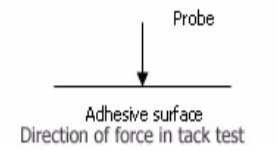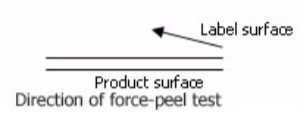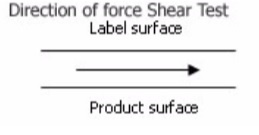Things to know about the successful use of Pressure Sensitive Adhesives
UltraTape Polyimide Label Materials are Compliant with REACH & RoHS Initiatives Set Forth for the Electronics Manufacturing Industry
Selecting the proper adhesive is essential to the success of the label in each application. UltraTape’s adhesives are formulated to withstand harsh chemical and solvent attacks in the most hostile process conditions. A wide variety of acrylic adhesives are available, each in different thicknesses, to achieve a wide range of tack, shear and peel properties. Different adhesive thicknesses can be used to better match unique requirements, such as open, porous surfaces (thicker adhesive works better), or a 'low profile' surface (thinner adhesives needed). Labels exposed to higher temperatures than acrylic adhesives can tolerate will need silicone adhesives to 'do the job'. Silicone adhesives are also used whenever a label must adhere to a low energy, rough or porous product surface. Specific applications which require flame retardant adhesives, tamper-evident constructions, or removable and repositionable adhesives are also available for specific requirements, upon request.
Things to know about the successful use of pressure sensitive adhesives.
• The surface that you want to label should be clean, dry and free of any surface contamination, such as dust, oil, or rust.
• When you apply the label, you must use firm pressure to increase the physical contact of the adhesive with the surface of the product.
• Once applied to a surface of the product, label adhesion to that surface increases over time. The force required to remove a typical label is dramatically increased even after 24 hours.
• Pressure sensitive adhesives will provide stronger adhesive bonds on a warm surface, as compared to a cold one. The adhesive will 'flow' more readily, increasing the surface area, and increasing the adhesion peel strength.
• Pressure sensitive labels must be stored in moderately controlled environments (i.e. such as an office, or warehouse) to prolong their shelf life.
Families of adhesives.
• Removable- a pressure sensitive adhesive characterized by low ultimate adhesion to a wide variety of surfaces that can be removed without damage to either the label or the substrate.
•Repositionable- a pressure sensitive adhesive characterized by low ultimate adhesion to a wide variety of surfaces, that can be removed without damage to either the label or the substrate and can be reapplied in a different location.
• Permanent- A pressure sensitive adhesive characterized by having relatively high ultimate adhesion. Attempts to remove the label will result in destruction of the label, or the surface to which it is attached.
Product offerings.
• Acrylic adhesive- high temperature resistance, high solvent resistance
• Silicone adhesive- higher temperature & solvent resistance than acrylic, but more expensive
Basic adhesion properties.
• Tack- Property of a pressure-sensitive label which causes it to adhere to a surface instantly with a minimum amount of pressure and contact time ("quick stick"). The tack is measured by measuring the force required to remove a micro-probe from the adhesive surface.

• Peel- the amount of force required to remove adhesive a predetermined speed. A peel test measures the force required to remove a label at a 180 degree angle from a standard surface (usually stainless steel).

• Shear- Shear testing measures the time required under specified test conditions, to slide a standard area of pressure-sensitive label on a surface when a force is applied parallel to that surface, i.e. the force between the product surface and the label surface. What is the effect of a "sideways" force on the label bond?

Surface Energy.
Surface energy is a measurement of the molecular forces on the surface of a product; "high energy" surfaces can be "wet out" by a high energy liquid, such as water. Low energy surfaces, cannot be wet out by water, i.e. the 'beading' of water on your freshly polished car. However, they CAN be wet out by 'low energy' liquids, such as oils...or LOW SURFACE ENERGY adhesives, This "wetting out" effect is critical to adhesion, since effective wetting increase the surface area of the adhesive in contact with the product. Adhesion strength is directly proportional to surface area. Likewise, adhesives can be adapted to maximize adhesion to either high energy surfaces, or low energy surfaces. Typically, a so-called "high energy" adhesive will not adhere as well to a 'waxy' or low energy surface, as will a 'low energy' adhesive. Different acrylic adhesives are available to maximize adhesion to either high energy, or low energy surfaces, respectively.
High Surface energy- clean, dry glass, metals, painted surfaces, certain plastics
Low Surface Energy- waxy, oily, Teflon, silicone & mold release
